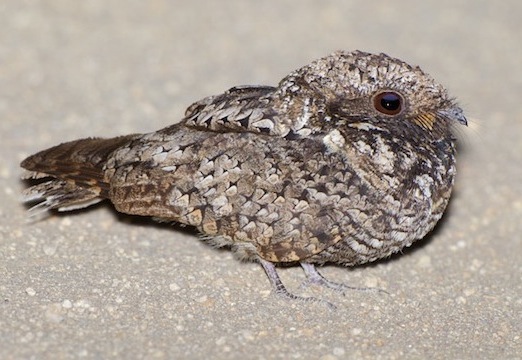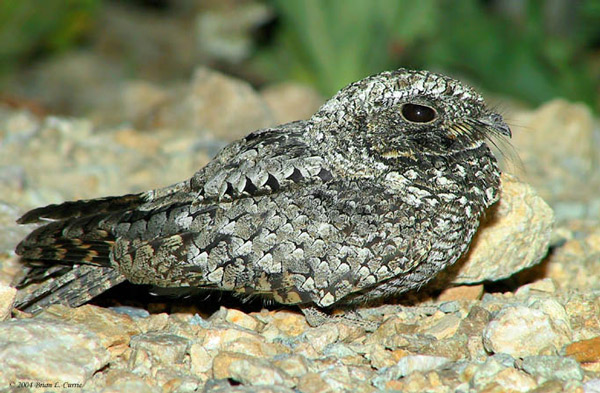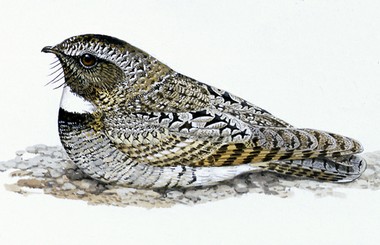
Phalaenoptilus nuttallii
SUBFAMILY
Caprimulginae
TAXONOMY
Caprimulgus nuttallii Audubon, 1844, eastern side of the upper
Missouri River. Five subspecies.
OTHER COMMON NAMES
English: Poorwill; French: Engoulevent de Nuttall; German:
Winternachtschwalbe; Spanish: Chotacabras Pachacua.
PHYSICAL CHARACTERISTICS
6.7–8.7 in (17–22 cm); 1.1–2.0 oz (32–58 g). Grayish brown,
grayish white, blackish brown, and buff cryptic coloration.
Sexes marginally dimorphic.
DISTRIBUTION
Breeds in western North America from southern Canada to
northern Mexico, leaving northern part of range for winter.
HABITAT
Open woodland, scrub, prairies, canyons.
BEHAVIOR
Roosts on bare ground during day, becoming active from
around dusk until before dawn. May become torpid and hibernate
in rock crevice for months during winter. Song sounds
like “poor-will-ip.”
FEEDING ECOLOGY AND DIET
Catches insect prey mainly on short sallying flights from low
perch or ground.
REPRODUCTIVE BIOLOGY
Unlined nest on ground with clutch of two unmarked, white
eggs. Incubation period 20–21 days; both sexes incubate. Small
young have vinaceous-buff down with dark markings. Young
make first flight at 20–23 days old.
CONSERVATION STATUS
Not threatened.
SIGNIFICANCE TO HUMANS
Living birds poorly known even to local people. Species has
become famous among ornithologists as best example of a bird
that hibernates.
Photo Gallery of - Common poorwill




 Animalia Life
Animalia Life